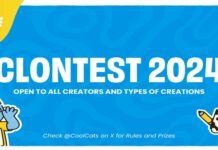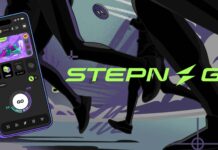[ad_1]
The challenges for artists in the music industry have been well documented for nearly a hundred years, and while there have been technological advances, some would argue that nothing has really changed. Is it because change is so daunting? Or do the participants in the ecosystem see an insurmountable climb to establish equitable distribution of revenue generated by their music?
In the past, the only way to “make it” in the music industry was to be picked up by a major label and elevated through a series of connections and influence to star status. Today, musicians can take a page out of Kevin Kelly’s 1,000 True Fans model, whereby building a community of 1,000 people who believe in you and your art can lead to earning enough money to create a sustainable living. Web3 offers similar opportunities for these artists.
One DAO that I’ve been following takes it a few steps further.
MODA DAO was built for change, and their founders include Joel Zimmerman (deadmau5), Dean Wilson (mau5trap), Inder Phull (Pixelynx) and other interdisciplinary music industry veterans. MODA DAO’s vision is driven by a concept called Music3, which is defined by their whitepaper below.
Music3 is a broad label referring to a new set of interconnected technologies, projects, companies, approaches and ideologies designed to harness Web3 distributed technologies for the purpose of creator empowerment and deeper connection between creators and fans.
MODA DAO’s mission and organizational methodology are equally compelling. After reviewing the whitepaper, their approach aims to consider the structure of the music industry if they were to start over, while researching ways to bridge legacy systems into the new structure.
Their research outlines the complexity of the existing systems, the lack of transparency and inefficiencies in the administrative processes, and the fragmented data structures that mask the true value of music. MODA DAO started by creating the MODA Foundation, which helped them bring together a core team and have a tangible way to interface with the current business community.
Many who are new to DAOs imagine them being a strictly computer-run entity, while others see a spectrum of structure that starts with a group of people and evolves into a community that eventually achieves a level of automation that best serves its mission.
MODA DAO’s Structure
MODA DAO’s roles include Members (those holding 5 tokens), Creators (those holding 10 tokens with Twitter verification), Ambassadors (those holding 100 tokens with 3 month membership and KYC), and Custodians (those holding 1,000 tokens with 6 month membership and application approval). Eight Custodian roles were initially appointed by the MODA Foundation and one selected from the community. Each year, one Custodian will be added from the community.
The Custodians will serve as an advisory council to the MODA Foundation, which provides updates to all community members. As the community grows, the MODA Foundation members will make way for more MODA DAO Custodians, until the spectrum has shifted from foundation to DAO.
If a Member or a Creator has an idea, they can submit a formal proposal to Ambassadors for consideration. If the Ambassador likes the proposal, they will add it to Snapshot for vetting and consideration by the Custodians.
The Music3 strategy is aligned around layers called Creator, Industry, Platform and Consumption, while describing the current challenges within those layers. MODA DAO applies three pillars (MODA Publishing, Music3 Tools & Standards, and Innovation Lab) to research and develop solutions to those challenges.
Creator Layer
In June 2021, they started their first initiative to create a fingerprinting algorithm to track music in the world of Web3. Today, they are close to releasing a version called Genesis NFT that allows creators to directly upload their song files. Once uploaded, MODA DAO’s tool generates a frequency versus time plot that marks peaks or unique occurrences in the audio on the map.
The result is a visual representation of the sonic aspects of the song based on 50 ms scanning through the MODA DAO algorithm. When the scan is complete, the peaks or unique occurrences are kept as a pattern of red dots and lined up with the vocal stems. This information is handed off to the blockchain team to create the NFT.
These data points are plotted to a circular representation that looks like a fingerprint and reminds you of a vinyl record. Part of their mission is to bridge the legacy aspects of the industry into Web3, and they are planning to incorporate ISRC (International Standard Recording Code) and the ISWC (International Standards Work Code). Imagine something like this being able to search and on-board all available legacy content as a bridge into Web3.
Industry Layer
Some of the top music managers in the world are already involved in MODA DAO, and they see music managers as a way in since they tend to oversee most or all aspects of an artist’s position with the label, publisher, PR, booking and industry associations.
When the labels were actually making physical products, there were significant costs for manufacturing, packaging and distribution. As the music industry moved digital, the general agreements between the labels and artists didn’t really change, and these costs turned into margin for the labels.
The current models to track and manage music through the economic experience is complex and even convoluted. Since legacy systems can actually benefit from this complexity, MODA DAO is approaching this problem by seeking ways to simplify the process and create something that is scalable and eventually autonomous.
Platform Layer
While current platforms welcome most if not all artists, an equitable distribution of streaming revenue is still not in sight. Most of the revenue falls toward the artists on the major labels, while most independent artists are left wanting more. In addition, the current platforms create unnecessary separation between the artist and fan.
MODA DAO’s research and development began by looking at where music is actually captured by creators. They claim that some of the administrative inefficiencies can be solved by approaching accurate, blockchain-based metadata at the Digital Audio Workstation (DAW) level. I’ve often thought of improving the “export as” function to include NFT along with WAV, MP3, MOV, etc. It could open more fluid collaborations while feeding a data ecosystem with accurate and usable data generating new efficiencies in an administrative process that moves at a glacial pace.
Consumption Layer
Consumers of music are arguably one of the most critical elements in the value chain, because without them, creators couldn’t monetize their art. MODA DAO’s approach to this layer is driven by the need for artists to own their own connection to their audience. One of the ways they address consumers is through their NFT Music Aggregator, which allows streaming of music NFTs from multiple NFT platforms.
Sometimes the best approach to change is to pick a point in the future and write your version of the present. Years ago, I sat on a panel for The New School in Atlanta to review and critique student pitches for new businesses. I was fascinated by one student’s approach to changing the world. Instead of being caught up in the two-sided wrestling match between right and wrong, she imagined a point in the future and wrote news headlines that described the world she wanted to see.
We can get so engulfed in the frenzied hustle of today that changing the world seems so unattainable. Only when we realize that change happens one small step at a time do we understand that it is well within our power to be agents of change.
MODA DAO’s Music3 whitepaper casts a vision for the music industry from the year 2030. This version of the future describes all musicians with a wallet that hosts all of their songs and performances with detailed metadata to allow them to move seamlessly through the Web3 world. Creators have access to open-sourced tools and catalogs from other creators, and collaboration is largely automated with details captured in a network of smart contracts.
The future points to artists and fans becoming hyperconnected, generating participatory experiences for all parties involved. MODA DAO is making steps every day moving toward this vision. I’m excited to watch their journey and even jump in and apply my own superpowers to their efforts.
Read more >> Music3 Whitepaper
Find out more >> MODA DAO Litepaper
Want more? Connect with NFT Plazas
Join the Weekly Newsletter
Join our Discord
Follow us on Twitter
Like us on Facebook
Follow us on Instagram
*All investment/financial opinions expressed by NFT Plazas are from the personal research and experience of our site moderators and are intended as educational material only. Individuals are required to fully research any product prior to making any kind of investment.

Metaverse Methodologist, Connector and Creator
[ad_2]
nftplazas.com







